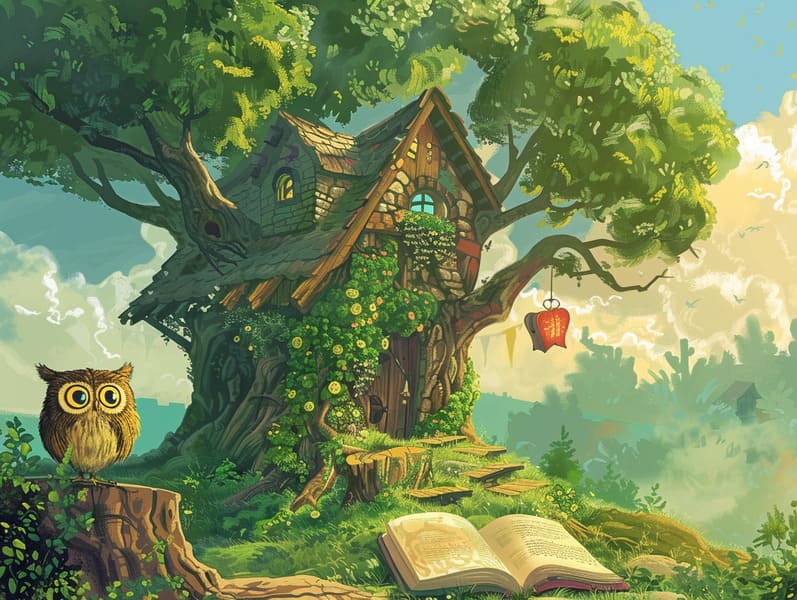
Fairy tales have long histories. These stories have been relayed from one generation to the next far before they were ever inscribed. They originated from a variety of traditions, including Indigenous traditions. They were initially disseminated among mature audiences, often carrying themes and messages related to the societal norms and beliefs of the time.
The famous Grimm duo, Jacob and Wilhelm Grimm, were among the first to gather and publish many of these beloved stories. Their collection, "Grimm's Folk Tales," included tales like "The Story of Cinderella," "Little Brother and Little Sister," and "The True Story of Snow White," which have since become staples in the world of famous fairy tales. Similarly, the Danish author's fantastical tales, such as "The Mermaid's Tale," and "The Duckling's Story," have won hearts worldwide, securing their place in the pantheon of timeless fairy tales.
Despite their historical roots, classic fairy tales remain as applicable as ever, especially as nighttime stories for kids. These magical stories are now available in various formats, including vibrantly illustrated books, delightful animations, and digital fairy tales.
Their unwavering allure can be credited to several fascinating points:
Significant Morals: Timeless fairy tales often impart important moral lessons. Narratives like "The Wolf and the Liar" teach the importance of truth, while "The Race of the Tortoise and the Hare" stress the traits of resolve and humility. These narratives offer little ones clear distinctions between moral and immoral, developing their moral compass in a kind yet important way.
Compassion and Knowledge: Classic fairy tales frequently include protagonists facing challenges and struggles, stimulating audiences to sympathize with their struggles and encourage their triumphs. For instance, "Beauty and the Beast" teaches us the virtue of valuing inner qualities to appreciate the real person of a individual, cultivating tenderness and knowledge.
Cultural Understanding: Many timeless fairy tales are imbued with the cultural contexts from which they originated. Exploring these stories can provide intriguing perspectives into different historical contexts, advancing a sense of world appreciation and perception.
Creativity and Imagination: The fantastical elements in classic fairy tales—wizardry and magic—motivate children’s fantastical thinking. These narratives move readers to fantasy realms, promoting imaginative ideas and a sense of awe that lasts a lifetime.
Traditional fairy tales are not only entrancing but also instructive. They provide alluring tools in advancing various mind and heart abilities in kids. When fairy tales are voiced, they develop language development by presenting new words and intricate sentence structures. This practice also strengthens hearing abilities and attention span, as kids focus on every detail, eager to see what happens next.
Furthermore, debating the themes and characters of timeless fairy tales can cultivate logical thinking and problem-solving abilities. Young readers are led to find patterns, anticipate outcomes, and catch on to cause and effect. These examinations also ease the young voice their thoughts and feelings, strengthening their emotional intelligence.
In today’s electronic age, the proliferation of free fairy tales online has made these tales more within reach than ever. Websites and online apps give broad selections of classic fairy tales that can be experienced or listened on anytime, anywhere. Fairy tales recited are particularly favored, sharing an entertaining method for the young to immerse in these delightful tales. Voice books and read-to-me stories transport characters and settings to life, often paired with fantastical audio effects and instrumentals that heighten the narrative journey.
The lasting allure of traditional fairy tales lies in their ability to transform to modern times while keeping hold of their main lessons. Contemporary modernizations of these stories often present more varied characters and modern settings, making them pertinent to today’s audience. However, the main ideas of gallantry, understanding, and rightness remain unchanged, continuing to resonate with readers of all ages.
Classic fairy tales also offer a sense of reassurance and comprehensibility. They distribute a tidy narrative with a distinct beginning, middle, and end, often drawing to a close with the closure of conflicts and the triumph of goodness over badness. This regularity can be relieving for young ones, allowing a sense of sturdiness in an shifting world.
Classic fairy tales continue to charm and train new generations, maintaining their charm and impact in modern society. As kids' bedtime tales, they present a perfect blend of allure and teaching, supporting moral values, empathy, and creativity. The abundance of online storybooks and the widespread nature of fairy tales voiced certify that these traditional tales remain acquirable to new generations.
By guarding and here releasing these narratives, we continue to honor the rich tapestry of fantasy and cultural heritage. Whether you are enjoying a vibrantly illustrated book, delving into a web-based collection, or listening through an narrated book, the charm of classic fairy tales is always within reach. These fairy tales highlight of the unwavering spell of narratives and its ability to bring us together across generations and cultures.
Whether you are viewing a gorgeously illustrated book, seeing a web-based collection, or hearing an audiobook, the wonder of classic fairy tales is always within reach.
These fairy tales demonstrate of the steadfast magic of storytelling and its ability to hold us together across centuries and lands, weaving a spell that fascinates and enlightens alike.
Comments on “The Rise of Vintage Fairy Tales and Their Consistent Attraction.”